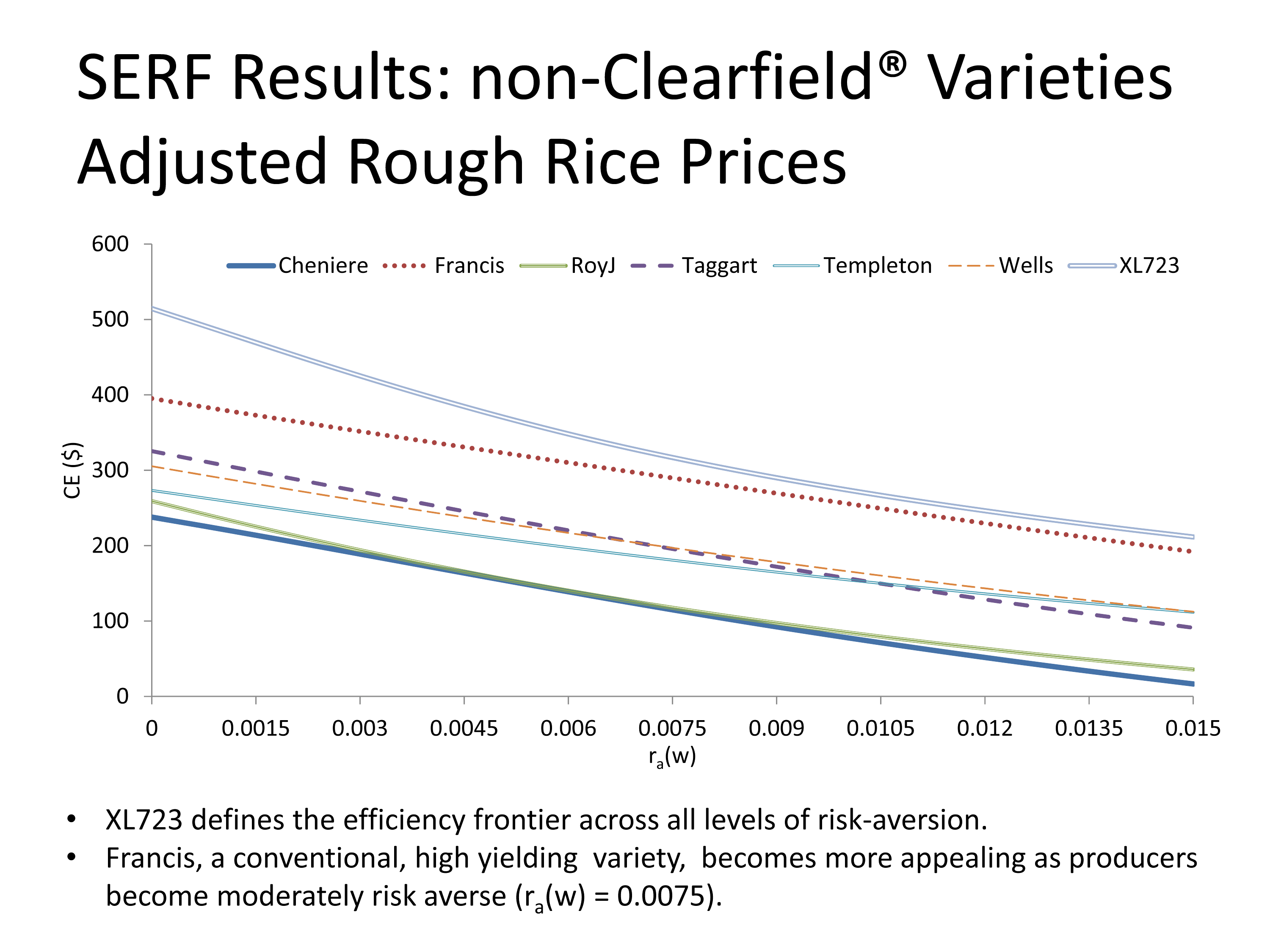
Rice is a big deal in Arkansas. The State is number one in the country for producing the crop, accounting for roughly 45% of total U.S. production. Recently, some Arkansas rice farmers banded together in a mass tort action against RiceTec®, a hybrid rice breeding company that owns all of the commercially released lines of hybrid rice. These rice farmers claimed that these pricier varieties of rice were faulty and milled poorly. According to the farmers, this combination of higher costs to them along with (in their view) lower quality meant the group could not earn profits on the hybrid rice which were equivalent to conventional (inbred) varieties.
Dr. L. Lanier Nalley, an associate professor of Agricultural Economics and Agribusiness at the University of Arkansas wanted to examine the validity of this claim, comparing the economic risk and return of RiceTec’s hybrid rice varieties to conventional, non-hybrid rice. Using @RISK’s Monte Carlo simulation features, Nalley was able to show that RiceTec’s hybrids were not only more profitable, but also less risky than their conventional counterparts.
Revolutionizing Rice
Unlike other major commodity crops, there are no commercialized GMO strains of rice in production. Instead, special hybrids have been developed which have higher crop yields and improved disease resistance. “It takes a large amount of time, money and science to create them,” says Nalley. These hybrids can yield 15-20% more than conventional varieties on similar land due to the improved genetic traits in parent varieties. Arkansas rice farmers adopted these new strains, with hybrid acreage increasing from 2% in 2002 to almost 50% in 2012.
These new varieties came at a premium cost. Conventional, non-hybrid rice seed costs roughly $22 per acre, while RiceTec hybrid seed cost around $150 per acre. “There’s sticker shock there,” Nalley says. “For the average farmer in Arkansas with a thousand acres, that’s a lot of up-front money.”
A problem arose with RiceTec’s early hybrid rice releases: During the milling process in which the grains are separated from their outer bran layers, a large portion of the rice kernels would break, or take on an opaque, chalky quality. “As a farmer, you get paid not by how much you yield in the field,” says Nalley, “but by how well that yield mills.” Due to these milling problems, rice farmers would get docked anywhere from $0.25 per 100 lbs to over $1.00 per 100 lbs for their hybrid rice due to chalky appearance and milling difficulty.
Farmers grew wary of the RiceTec hybrid varieties based on these early milling issues, and despite the company releasing new varieties that yielded better milling results, “some people still had the perception that all hybrids had sub-standard milling quality,” Nalley explains.

Dr. L. Lanier Nalley
Agricultural Economics and Agribusiness, University of Arkansas
Evaluating the Claims
Nalley and his colleagues examined the claims brought by the Arkansas farmers in their mass tort action against RiceTec. They wanted to determine if the poor milling results caused an economic loss for the rice farmers. Using small test plots run by the University of Arkansas, Nalley and colleagues used this data in an attempt to recreate the results that led to the mass tort claims to see if the hybrid strains were in fact no more lucrative than conventional non-hybrid rice strains.
Nalley also wanted to determine what type of rice strain a farmer should use given different levels of personal risk aversion that farmer may have.
In order to accurately determine these questions, Nalley and his colleagues turned to Palisade’s @RISK software, which allowed them to expand their limited data set (of six observations for each variety for ten years) into a million-fold stronger. This capability was paramount. “Without simulation software like this, we don't have enough observations to get the kind of data we need,” says Nalley.
Hybrids Still a Better Bet
Nalley found that, thanks to the enormously higher overall crop yield, even with a $1 per 100 lbs docking fee from mills, the hybrids still gave an overall higher profit.
As for risk aversion levels in farmers, Nalley found that, no matter what a farmer’s tolerance for risk was, they were better off using the hybrid strains--meaning these strains were giving not only higher profits, but also more consistent profits over time.
Nalley says @RISK played a key part in determining these results. “The simplicity of this software meant that I could literally do these calculations in five minutes,” he says. “The other big thing was that @RISK does an unbelievable job of creating very user friendly outputs. I gave a presentation of these findings at several places--and you don’t have to be a statistician to understand these very nice distributional outputs.”
